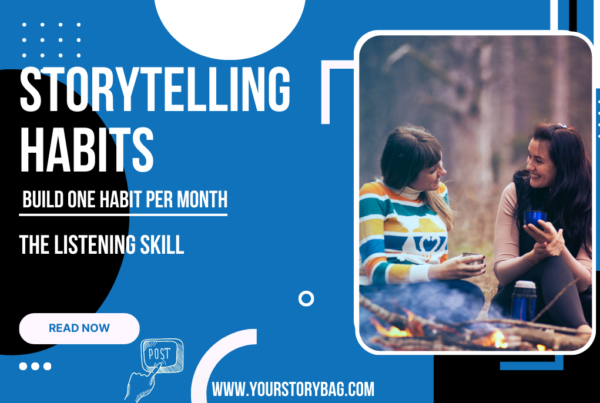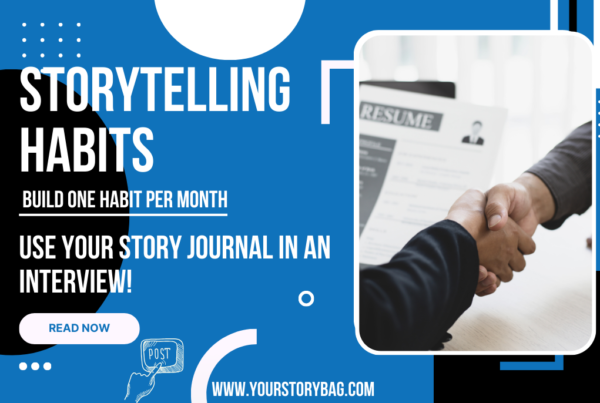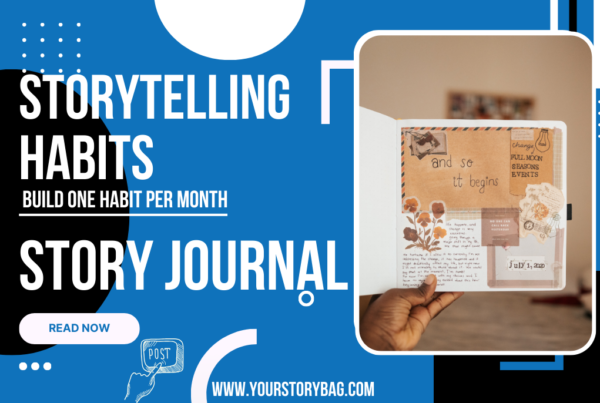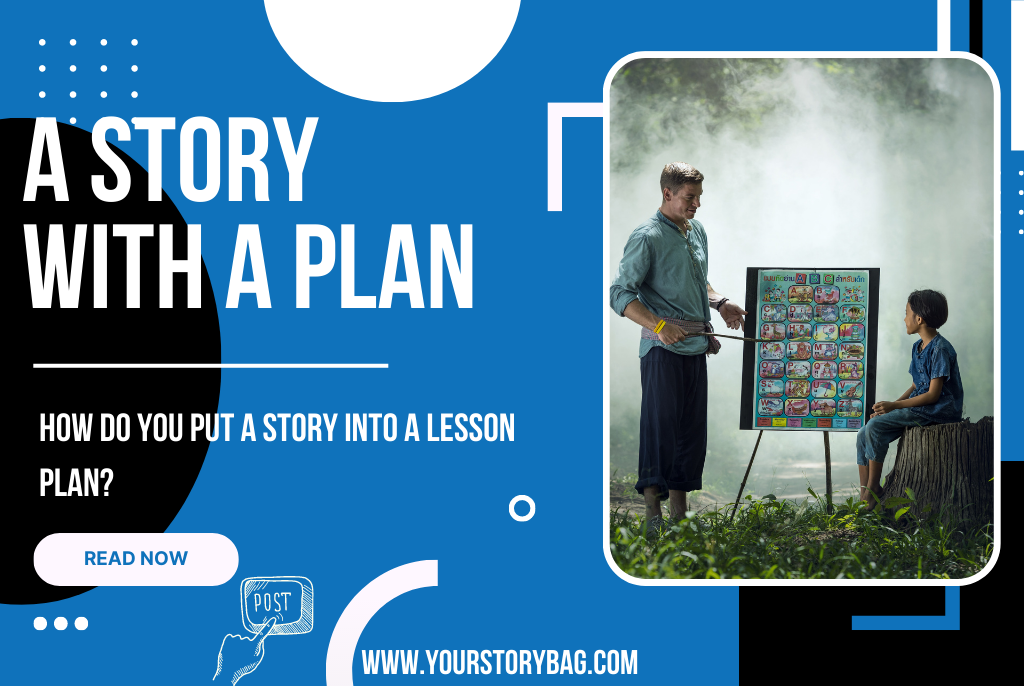
Stories have the unique ability to Entertain – Engage – Educate learners, making “Stories in the Classroom”, a powerful strategy.
Of course, you know that already. After all, we have been telling you that for the past 9 years!
. Who has the time for stories in middle / senior school?
. There are no stories for subject beyond languages!
. Where do you find these stories?
. How do you integrate them with a classroom lesson?
. Where does the story end, where does the lesson begin?
At Your Story Bag, we have been working with Story Pedagogy since 2015, long before it was named in NEP 2020. In 2015, Rituparna was invited to teach a batch of Bachelor of Elementary Education students in Delhi University. Someone saw Rituparna perform at festival and then invited her to give a talk. Eventually, someone invited her to teach how to tell a story! Back in the day, the Art of Storytelling was the most desired skill. When we first discussed the ongoing Storytelling & Children’s Literature Course with other educators, we learnt that much of the teaching was limited to language learning. But why language?? A Story is a fantastic tool to ‘teach’ anything in a classroom. We kept the curiosity of an explorer intact and travelled the Storyverse of Children’s Storytelling inside and outside the classroom. This exploration took us to numerous schools, organisations, teachers and classrooms. As our work grew, so did our desire to create a network of Storytelling Teachers.
We have been walking this journey for the past 9 years. We have covered the steps, but haven’t reached our goal. So as we walk over to our 10th year, we have decided to get a new route.
This year, we have got ourselves some new traveling tools (new courses and programs), a compass (a vision to cover 1000 teachers every year), and we are looking for adventure seekers (Teachers like YOU)! We are on a mission to Spark Classrooms, The Storied Way.
We will help you navigate this path by giving you A Story with a Plan!
How?
Let’s start with a Story!
Take a moment to listen to The Mountain and a Hill on our weekly Story Podcast, Golpo: Stories from Around the World.
This Bhutia Folktale comes from the hilly state of Sikkim.
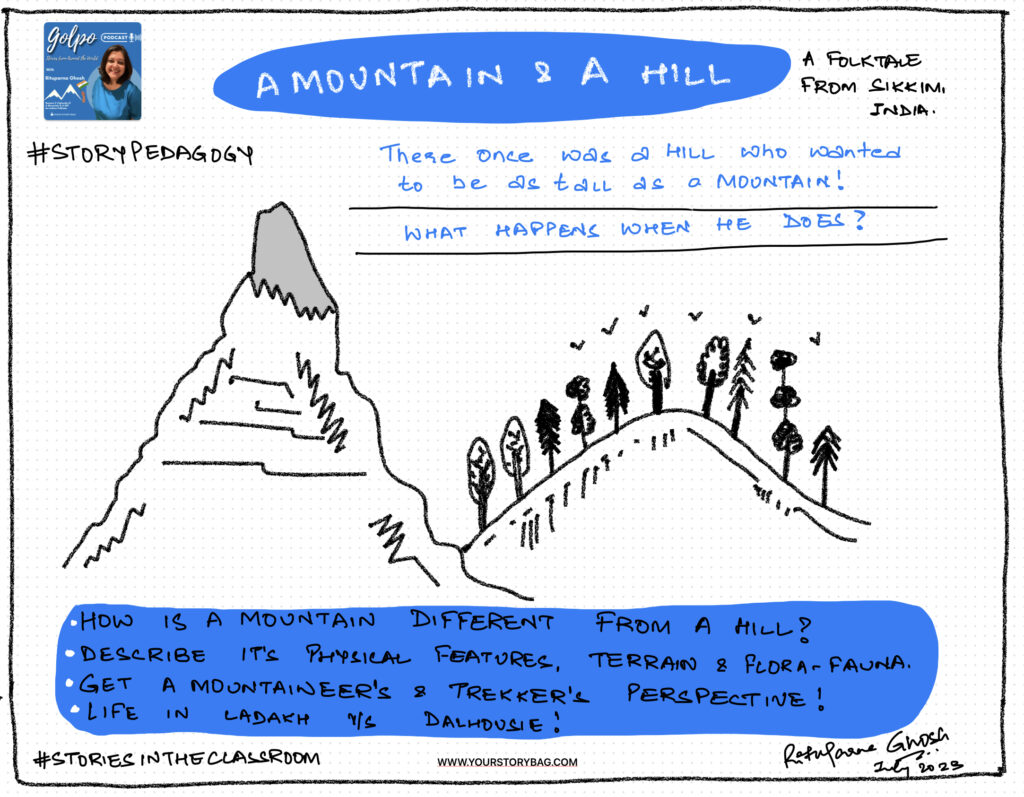
A Mountain and a Hill
One listen to this story, and we can find it relevance in Geography, Social Studies and Environment Lesson.
Here are 3 Strategies to Use this Story in a Classroom:
1) Use the Story as a Hook: Start with a Tale!
Imagine beginning a lesson with a story that instantly captures the attention of your students. This storytelling experience acts as a hook, drawing students into the lesson and setting the stage for learning about hills, mountains, topography, climate, flora & fauna. This story when told right can work as a tool to “Assess the Knowledge” of children by asking what they think is the difference between a hill and a mountain. By gathering insights from knowledge or experience (children who have travelled to high altitudes) you can create a list of facts BEFORE you teach a lesson. Consider this story being told in a school that’s on the hill! Your questions about Hill and Mountain will change slightly.
Remember there is a set of questions BEFORE a story and separate set of questions AFTER the story. When you use the story as a HOOK, the strategy is to lead the children into the lesson where they learn about what they heard in the story.
2) Use the story for Critical Thinking: Why do certain things happen?
You can use this strategy when you are in the midst of teaching the lesson. The assumption is that the story is told somewhere in the middle of a lesson. In this case, you have already spoken about the key differences between hills and mountains, discussed their own observations, given relevant examples and now you want to see whether the children are able to connect the dots. Tell the story UPTIL the point where one fine day, the hill grows up to be the mountain. Vividly (and dramatically) tell them what happens to the trees, animals and birds on the hill. Once you do that, STOP to ask why does that happen?
3) Use the story as a Dilemma: Tell it at the End of a Lesson to Assess Learning
The third strategy involves NOT telling the story at all until you have taught the lesson on land forms. Concluding a lesson with a story provides an opportunity to assess students’ understanding and gauge their learning outcomes. Pose the story as a Listening Test. Get them to listen to the story and write out the reasons why the Hill’s environment changed with growing altitude. Or ask them to study the lifestyle of hill dwellers and give the reasoning for the same. Or even better, invite a Mountain dweller, a mountaineer, trekker to the class and allow your students to interview them. You can also deploy Drama-in-Education techniques to become the Teacher in Role to implement this. What better way to assess students learning, curiosity and knowledge gathering skills by storytelling! This method allows you to evaluate comprehension while encouraging students to introspect and connect the story to real-life situations.
Let’s NOT restrict Storytelling to entertainment! Yes, stories MUST entertain, their power is tripled when you bring in participation and active learning!
For more stories, head over to our weekly podcast where you will find ready-to-tell stories in your Classroom!
Remember to look up Spark Classrooms, The Storied Way, for the next set of workshops for Teachers and Tickle Your Story Bones, if you want to work with children.
Available on all Streaming Platforms
Apple Podcast | Audible| Google Podcast | Spotify| Amazon Music
This post first appeared in our Monthly Newsletter for Teachers – Spark Classrooms, The Storied Way.

